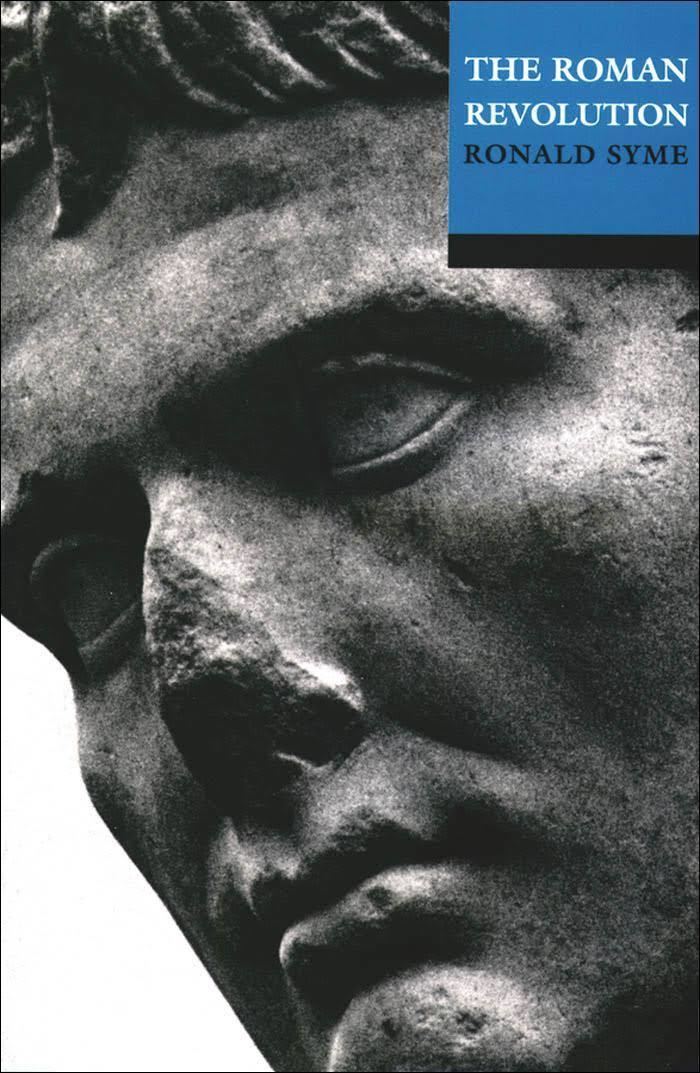8.4 /10 1 Votes8.4
Originally published 1939 | 4.2/5 Goodreads | |||||||||||||||||||||||||||||||||
 | ||||||||||||||||||||||||||||||||||
Similar Works by Ronald Syme, Ancient Rome books, Roman emperor books | ||||||||||||||||||||||||||||||||||
The roman revolution a folio society review
The Roman Revolution (1939) is an influential scholarly study of the final years of the ancient Roman Republic and the creation of the Roman Empire by Caesar Augustus. The book was the work of Sir Ronald Syme (1903-1989), a noted Tacitean scholar, and was published by the Oxford University Press. It was immediately controversial. Its main conclusion was that the structure of the Republic and its Senate were inadequate to the needs of Roman rule, and that Augustus was merely doing what was necessary to restore order in public life. This was a situation and reasoning uncomfortably reminiscent of contemporary events in Nazi Germany and the other fascist regimes of the time.
Contents
- The roman revolution a folio society review
- The roman revolution a popular revolution
- Reception
- Editions
- References
Syme relies on prosopography, especially the work of German scholars Friedrich Münzer and Matthias Gelzer, to show the extent to which Augustus achieved his unofficial but undisputed power by the development of personal relationships into a "Caesarian" party, then used it to defeat and diminish the opposition one by one. The process was slow, with the young Octavian initially just using his position as a relative of Julius Caesar to pursue Caesar's assassins, then over a period of years gradually accumulating personal power while nominally restoring the Republic. In addition, the portrait he paints of Augustus as a somewhat sinister autocratic figure is immensely influential among subsequent generations of classicists.
The roman revolution a popular revolution
Reception
Maurice Bowra said in 1939 of Syme's The Roman Revolution "His work is extraordinarily persuasive and interesting... the best book on Roman history that has appeared for many years".
Syme's conclusion of inevitability is less strongly supported than his elucidation of the takeover process, since at each point we see that Augustus is exercising his free choice, albeit for what he sees as the good of his country. In The Last Generation of the Roman Republic (1974), Erich S. Gruen offered an opposing point of view, arguing that the traditional view of the Republic's decay is not actually supported by the objective evidence.
Editions
The Roman Revolution has been reprinted regularly by OUP since its first appearance, most recently in 2002 (ISBN 0-19-280320-4). (Corrections to the text were made by the author in 1952 and 1956.)
A revised German translation was published by Klett-Cotta in 2003 (Die römische Revolution).
A new English edition, with an introduction by G.W. Bowersock, was published by the Folio Society in June, 2009.
A Japanese translation in two volumes was published by Iwanami Shoten in 2013 (with the second edition’s pagination printed in margin and the original index rendered in Japanese included) (『ローマ革命(上)』[ISBN 978-4000025980] and『ローマ革命(下)』[ISBN 978-4000025997]).
